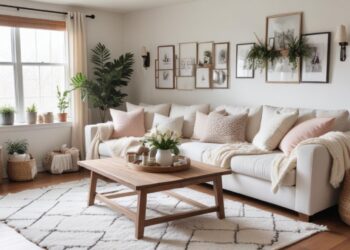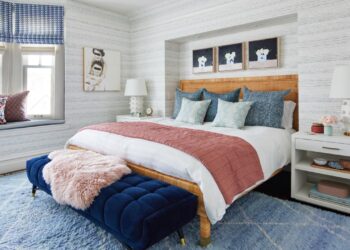Color and light are the unsung heroes of any interior design project. They have the power to dramatically alter the mood and atmosphere of a room, making it feel spacious, cozy, warm, or cool.
1. The Psychology of Color:
- Cool Colors (Blues, Greens, Purples): These colors evoke feelings of calmness, tranquility, and spaciousness. They are ideal for bedrooms, bathrooms, and home offices.
- Warm Colors (Reds, Oranges, Yellows): These colors create a sense of warmth, energy, and excitement. They are perfect for living rooms, dining rooms, and kitchens.
- Neutral Colors (Whites, Grays, Browns): These versatile colors provide a blank canvas for layering other colors and textures. They create a sense of calm and sophistication.
2. The Power of Light:
- Natural Light: Maximize natural light by keeping windows clean and unobscured. Use sheer curtains to allow light to filter through.
- Artificial Light:
- Ambient Lighting: Provides overall illumination for a room (e.g., ceiling lights, floor lamps).
- Task Lighting: Provides focused light for specific activities like reading or cooking (e.g., desk lamps, under-cabinet lighting).
- Accent Lighting: Highlights specific features like artwork or architectural details (e.g., wall sconces, track lighting).
3. Color and Light Combinations:
- Cool Colors + Warm Lighting: Create a cozy and inviting atmosphere in bedrooms and living rooms.
- Warm Colors + Cool Lighting: Add a touch of sophistication to dining rooms and kitchens.
- Neutral Colors + Natural Light: Maximize the brightness and spaciousness of any room.
4. Color and Light Tips & Tricks:
- Use a Color Wheel: Experiment with different color combinations using a color wheel.
- Test Paint Samples: Paint large swatches of different colors on your walls to see how they look in different lighting conditions.
- Layer Lighting: Combine different types of lighting to create a multi-dimensional and dynamic effect.
- Dimmers: Use dimmers to adjust the intensity of your lighting and create different moods.
- Mirrors: Reflect light and make a room feel larger and brighter.
5. Color and Light for Small Spaces:
- Light Colors: Use light colors on walls and ceilings to make a small space feel larger and brighter.
- Mirrors: Place mirrors strategically to reflect light and create an illusion of space.
- Natural Light: Maximize natural light by keeping windows unobstructed.
By carefully considering the interplay of color and light, you can transform your home into a beautiful and inviting space that reflects your unique personality and style.
Disclaimer: This blog post is for informational purposes only and does not constitute professional interior design advice.
I hope these tips and tricks help you unlock the magic of color and light in your home!











